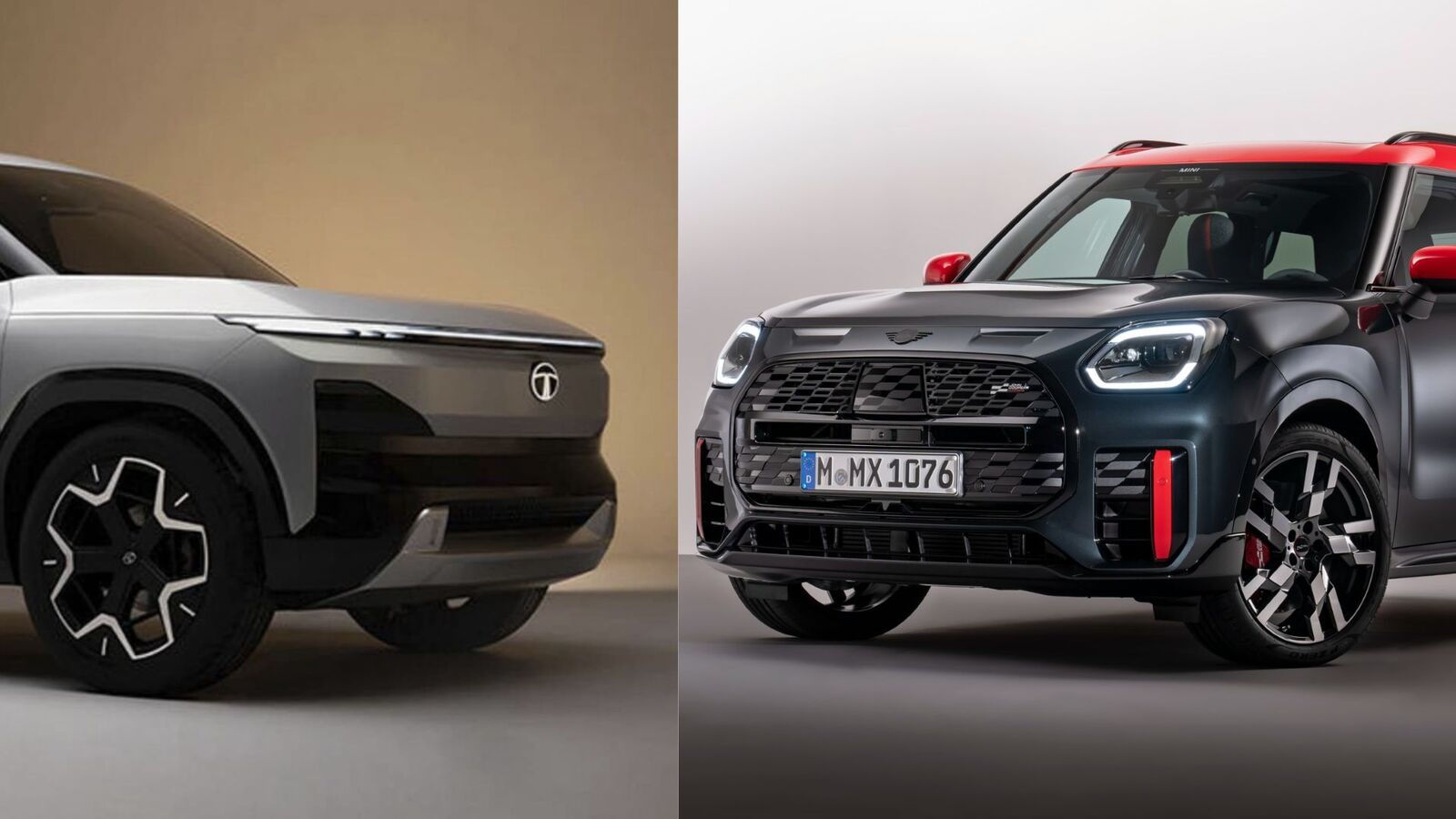13 October 2025

Demand for battery-electric light-commercial vehicles (LCVs) surged in the UK during September, as the wider market continued to decline. Andy Picton, specialist residual value analyst at Glass’s, unpicks the data with Autovista24 web editor James Roberts.
The UK’s new LCV market recorded its 10th consecutive month of decline in September. Demand fell by 2.1%, with 47,418 new vans, pickups and chassis variants registered. This was 1,037 fewer than September last year, according to the latest data from the SMMT. Additionally, year-to-date registrations were down 9.8% compared with 12 months ago, at 241,264 units.
The ‘plate change’ month of September should have been one of the market’s strongest. Every March and September, new age-identifying number plates are released, with many buyers opting to wait for their registrations until these are available. This often creates a boost in deliveries during these two months.
However, overall demand for LCVs last month proved mixed. Surprisingly, the pickup sector saw the biggest increase at 7.8%, while vans under 2 tonnes gross vehicle weight (GVW) recorded a 1.9% increase.
The market for vans and chassis between 2.5 and 3.5 tonnes GVW saw registrations increase by 3.2% in the UK. The 32,670 registrations exceeded September 2024’s figures by 1,025 units and made up 68.9% of all deliveries in the month.
LCVs weighing between 2 and 2.5 tonnes GVW declined 25.1% compared to the same month last year. Meanwhile, the 4×4 sector fell by 13.4%.
Ford leads UK LCV rankings
Ford capped an excellent September, holding the top three positions. This was thanks to the Transit Custom with 7,725 units, ahead of the Transit, registering 4,762 units. Then came the Ranger pickup with 3,109 deliveries. The same three models also held the top three positions in the year-to-date rankings. The Volkswagen (VW) Transporter finished in fourth with 2,256 units, and the Peugeot Partner took fifth with 2,203 registrations.
The Vauxhall Vivaro secured sixth with 2,052 units, followed by the Renault Trafic in seventh with 2,049 registrations. The Mercedes-Benz Sprinter claimed eighth with 2,015 units, while the Toyota Hilux ended up ninth with 1,525 registrations. The VW Crafter rounded out the top 10 with 1,179 units.
Electric LCV upward trend continues
September marked the 12th straight month of increased all-electric LCV registrations in the UK, up to 4.25 tonnes GVW. In total, 4,262 units were registered, compared with 3,020 12 months ago. This equates to a monthly market share of 8.9%, up from 6.1% in September 2024.
Year to date, registrations continued their ascent, with 22,118 new battery-electric van deliveries by the end of September. This is compared with 14,188 12 months ago. The total all-electric van market share remained at 9.1%, up from 5.3% at the same point last year.
Although manufacturers offer over 40 different zero-emission van ranges in the UK, uptake of these vehicles is still under 60% of the mandated zero-emission vehicle (ZEV) target for 2025.
The extension of the plug-in van grant (PIVG), along with the depot charging scheme, is a step in the right direction. However, without a decarbonisation scheme that includes LCV-specific public, depot and shared hub charging infrastructure, the transition to a zero-emission future will remain slow.
UK LCV electric registrations in detail
Ford accounted for nearly a third of all new battery-electric LCVs registered in September. Maxus followed in second, with an 18.4% market share. VW rounded out the top three with a 17.4% market share.
Peugeot ended the month in fourth with a 10.1% market share, followed by Toyota in fifth with 6.3%. Further down the list, Renault ended September in sixth with 239 units (5.6% share). Vauxhall dropped two places to seventh with 134 registrations (3.1% share). Mercedes-Benz claimed eighth, selling 90 units (2.1% share), and Citroen took ninth, accounting for 72 units (1.7% share). Nissan rounded out the top 10 with 34 units (0.8% share).
By range, the Ford E-Transit Custom accounted for 22.6% of all registrations in September. Following a positive month, the Maxus eDeliver 7 claimed second with a 13% market share. The VW ID.Buzz Cargo took third with 12.2%. Then came the Peugeot eExpert with 6.2% and the Ford e-Transit with 6%.
The VW eTransporter took sixth in the electric van rankings with 219 units (5.1% share). It was followed by the Ford E-Transit Courier in seventh, with 172 units (4% share). The Peugeot e-Partner was eighth with 169 units (4%), the Toyota Proace City Electric came ninth with 139 units (3.2%), and the Maxus eDeliver 9 rounded out the top 10 with 129 units (3.0%).
Leading the year
After three quarters of the year, Ford registered 6,578 all-electric units, giving them a 29.7% share. This encompassed three different product ranges. In second, VW saw 4,188 vehicles (18.9% share) reach customers, over two different product ranges. Vauxhall sat in third with 2,220 new all-electric vans and a 10% share between January and September. This offering spanned three different product ranges.
While Ford continues to outsell its competitors in sheer volumes of electric van sales, not everything was positive. With 7.3% of its registrations coming from these models, this was less than half the ZEV-mandated target of 16%. Conversely, Ford’s closest volume competitor, VW, exceeded the target with 17%. Meanwhile, fifth-place Maxus held a 27.1% all-electric van share.
Between January and September, 8,182 plug-in hybrid (PHEV) vans were registered, with Ford claiming a dominant 78.9% share. The PHEV van segment saw Ford, Toyota and VW register a combined 2,077 units. Ford led the way with 1,078 Transit Custom, 424 Ranger PHEVs, and 230 Transit Connects. Toyota followed with 313 Corolla Commercials, while VW added 32 Caddy PHEVs.
September’s strong used-LCV market
September proved a stronger month at auction, with vehicle volumes increasing by 10%. With buyers seeking new stock and a better selection of vehicles on offer, average sales prices increased by 1.5% to over £8,200 (€9,442).
There is ongoing demand for quality LCV stock that requires little or no work. Buyers preferred to spend more on the finished article. However, older, more affordable vehicles, especially if accompanied by sensible miles and a full-service history, continue to attract growing attention. Additionally, late plate stock appeal can be unpredictable, with unrealistic reserves hindering potential sales.
September saw overall used vehicle sales improve by 10%. This was coupled with an average age decrease of 0.3 months. Average mileage increased by over 1,425 miles (2,293km) to 72,026 miles, whilst first-time conversion rates rose to 87.8%.
Sales were up 3.3% on September last year, while average sales prices increased by 14.1%. Average mileage over the last 12 months fell by nearly 8,000 miles. The average age was 4.8 months younger than twelve months ago, and first-time conversions were up 14.6%.
Sales of Euro 6 vehicles increased by 2.7 percentage points (pp), to 81.8% Meanwhile, sales of Euro 5 vehicle rose 3.9pp to 15.4%.
Medium vans led demand with 38.4% of sales, followed by small vans (28.9% share), and large vans (23.2% share). The 4×4 pickup sector accounted for 9.3% of the market. However, these vehicles commanded the highest average sales price at nearly £13,300. Large vans covered more distance than any other vehicle type in September at an average of 80,956 miles, an increase of over 4,550 miles compared with August.
Used electric LCV market down
Used all-electric van transactions were down 1.3% in September. The average age of a sold electric van was up 0.9 months to 29.1 months. However, this was 10.3 months younger than 12 months ago. Average mileage decreased from 19,442 miles to 10,572, sitting 60% lower than at the same point in 2024.
September’s first-time conversion rate improved to 79.5%, up from 52.1% when compared with 12 months ago. Average sale prices rose nearly 12% to just over £10,750 during the month, and 17.6% for the year.
The medium van sector accounted for over 46.5% of all sales in September. Small vans accounted for nearly 42.5% and the large van sector just under 11%. The highest mileages were covered in the small van sector, averaging 13,220 miles, with the lowest in the large van sector at 5,236 miles.
Large electric vans attained the highest average sales price at just under £17,000, with the highest first-time conversion rate of 100%. Over 50% of electric van sales were in the two-to-four-year-old age bracket during September.
Marginal used retail market decline
The number of used vehicles listed for sale in the retail market fell by 0.75% in September. Diesel models made up the bulk of used LCVs on sale at 90.4%, while all-electric vans accounted for 5.2%. This was ahead of petrol with 2.3% and PHEVs with 1.7%. Those with manual transmission accounted for 69%, and automatic transmission 31%.
Panel vans accounted for 58.7% of all LCVs on sale, 8.1% were crew vans, and 14.5% were 4×4 pickups. Minibuses (3.7% share), tippers (1.5% share), dropsides (1.4% share), and car-derived vans (1% share) followed behind.
A total of 40.2% of vehicles listed were priced at £20,000 or more, and 37.3% were priced between £10,000 and £20,000. 18.3% sat in the £5,000 to £10,000 range, while only 4.2% of vehicles were priced below £5,000.
White vans led in popularity, accounting for half of all listings. Grey (16.8%), black (10.5%), and silver (9.8%) came next, followed by blue (6.3%), and red (2%). The average vehicle age decreased by one month to 54 months, as did average mileage, which fell 3.7% to just over 52,100 miles.





